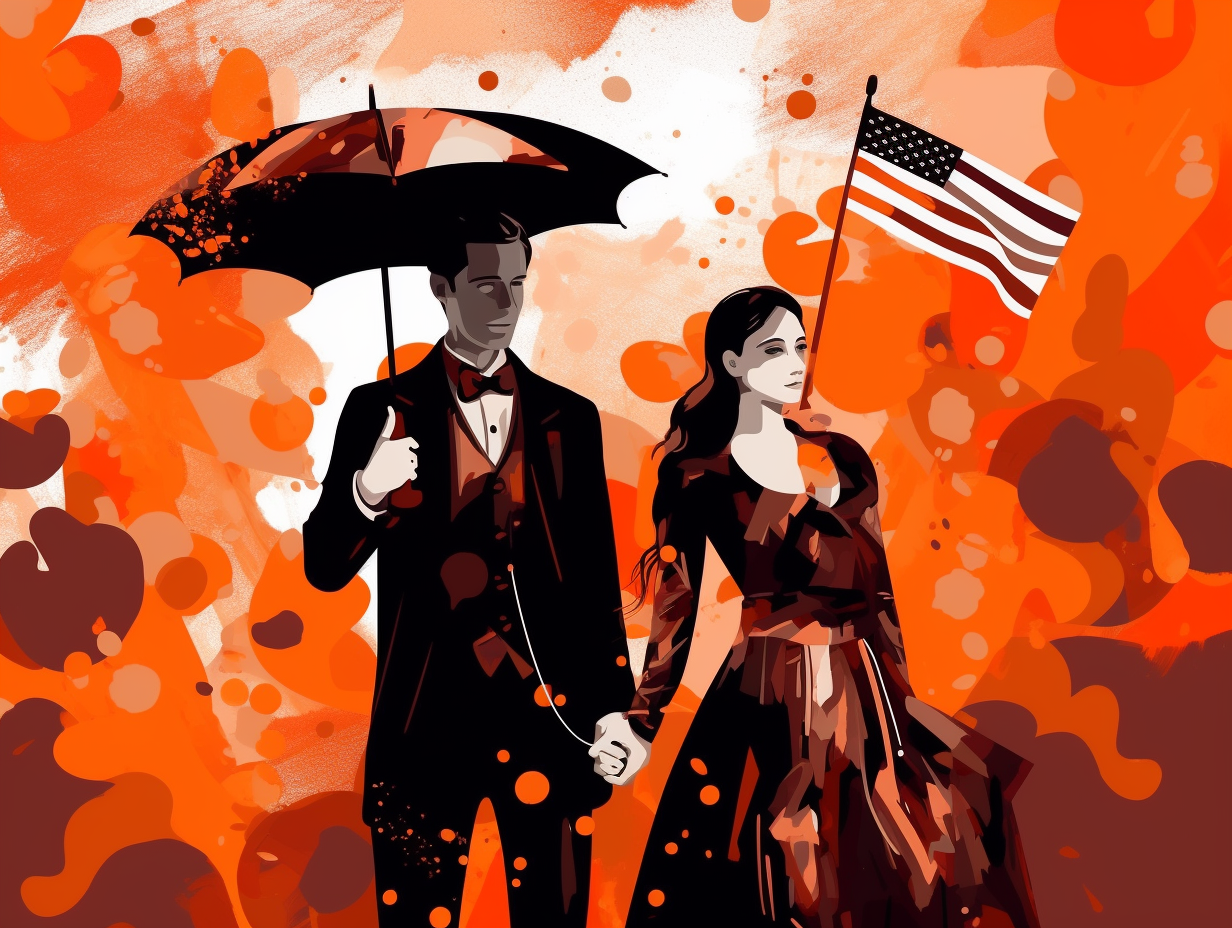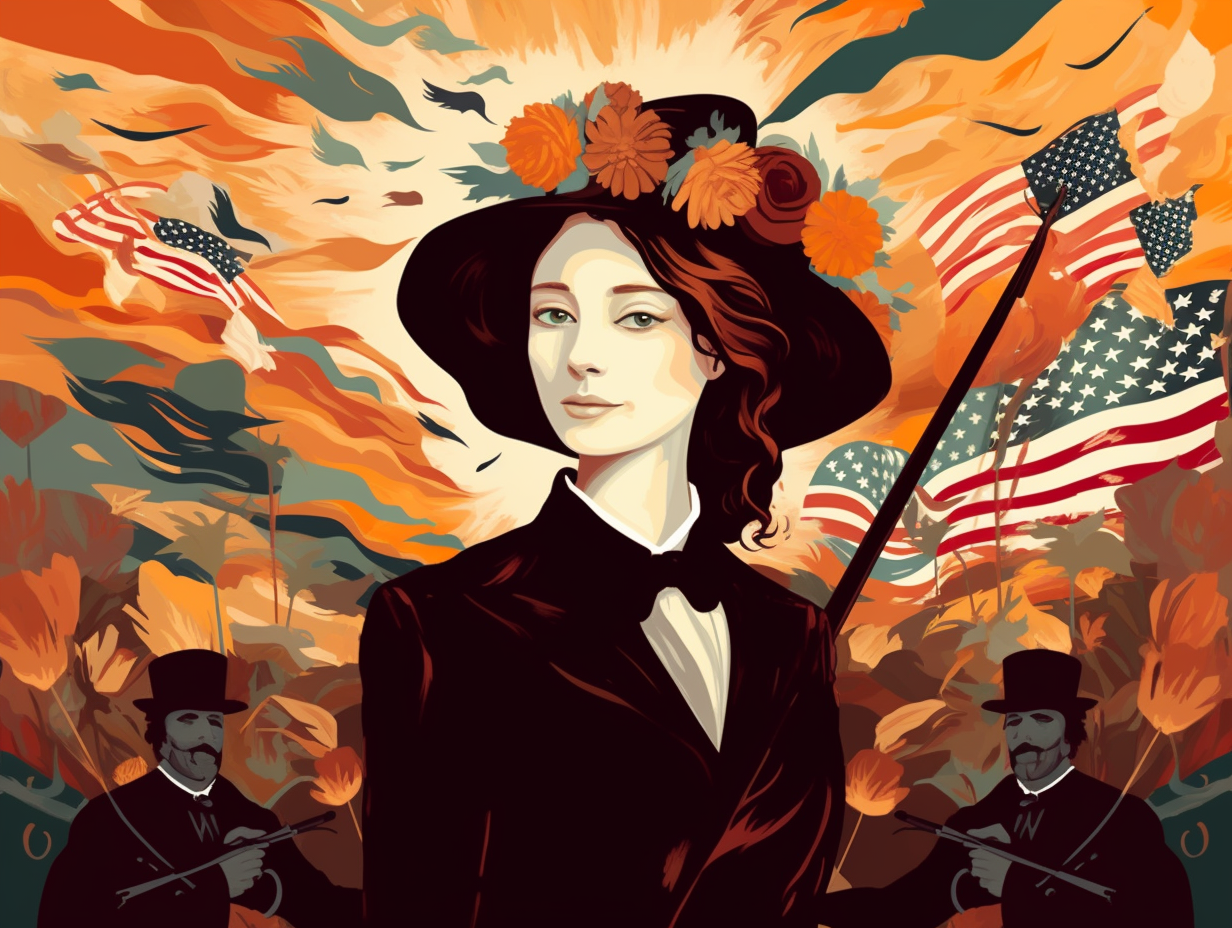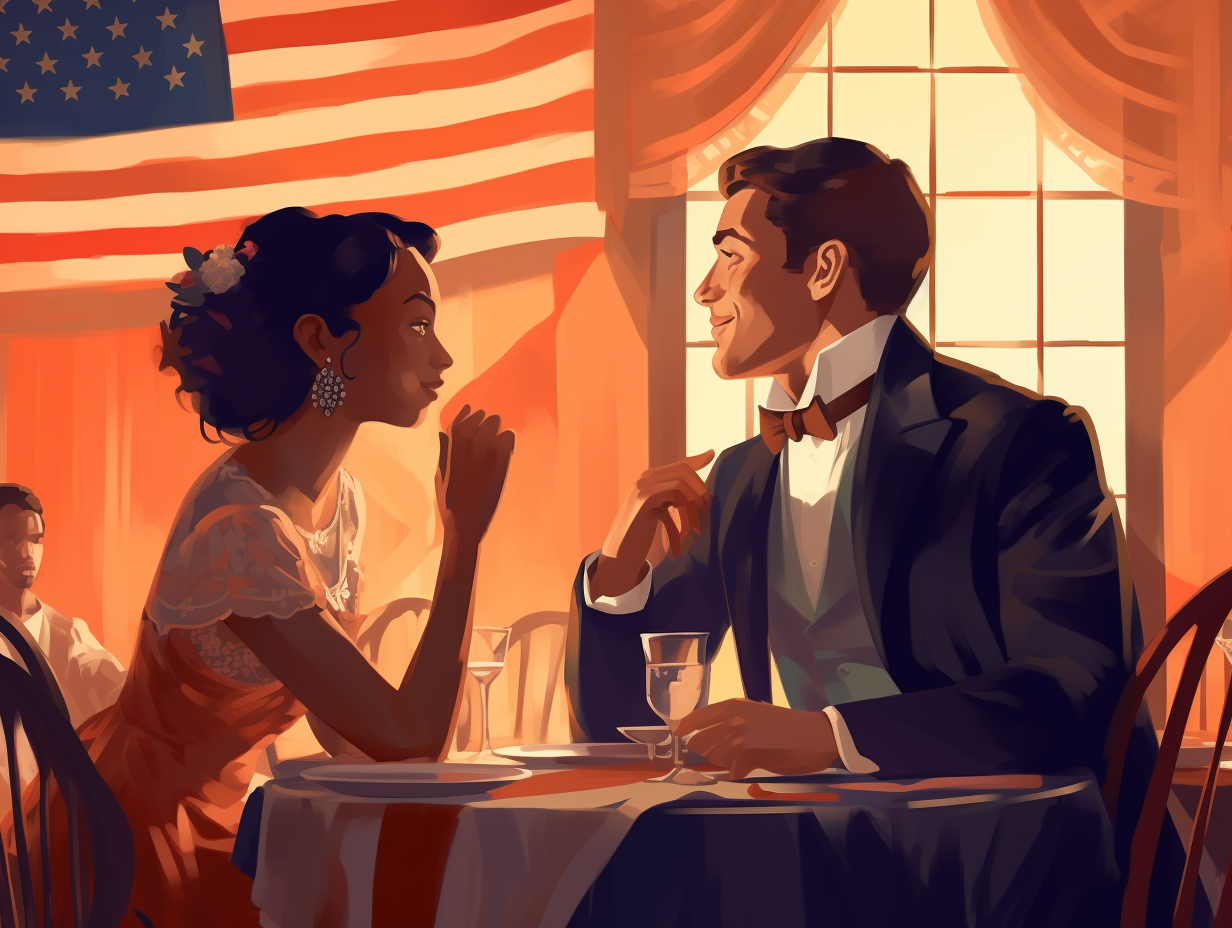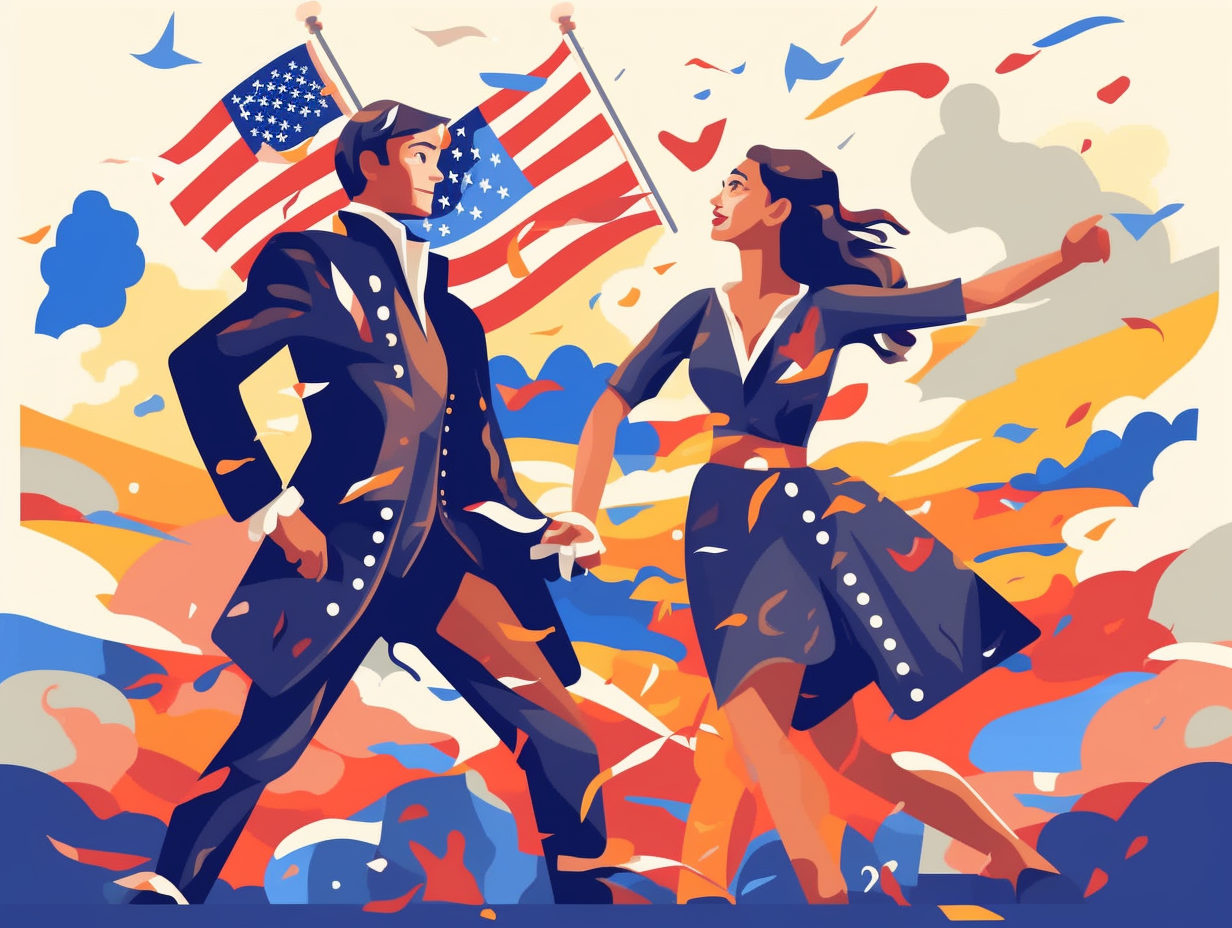Unraveling History: Top 13 Fun Facts About the 12th Amendment You Never Knew!

1. Superhero 12th Amendment
When the Founding Fathers said, "Get your vote on!" they certainly didn't anticipate a presidential duel à la Hamilton: The 12th Amendment swooped in like a superhero in 1804, following the infamous tie in the 1800 election between Thomas Jefferson and Aaron Burr. Bam! Pow!: Its main purpose was to separate the Electoral College votes for President and Vice President, preventing a scenario where the top two honchos would be bitter rivals from opposing parties.
Source => history.house.gov
2. Rubik's Cube Record Breaker
In a world where political ties are harder to break than a Rubik's cube record: the 12th Amendment quirkily saves the day! Ratified in 1804, it ensures that if there's an electoral tie or no majority for presidential and vice presidential candidates, the House of Representatives picks the president while the Senate selects the vice president - the ultimate tiebreaker for capitol deadlock dilemmas!
Source => reagan.blogs.archives.gov

Did you know that Alexander Hamilton, John Jay, and James Madison secretly joined forces as "Publius" to write 85 essays promoting the U.S. Constitution? Discover how these founding fathers went viral in a pre-social media world! 📜✒️🇺🇸
=> Fun Facts about The-Constitution
3. Founding Fathers' Own Goal
In the high-stakes game of "I'm With Stupid," the Founding Fathers managed to score a spectacular own goal during the tumultuous 1800 presidential elections, when two top contenders had to awkwardly share a bunk bed: As it turns out, the Twelfth Amendment was added in 1804 to prevent such electoral nail-biters by requiring electors to vote separately for President and Vice President, and setting up clear procedures for resolving ties and contested elections in the House of Representatives, effectively fostering the rise of political parties and promoting democracy.
Source => reaganlibrary.gov
4. Two-for-One Electoral Deal
Who knew the Founding Fathers were such fans of two-for-one deals? Back in their day, the Electors cast a vote for President and Vice-President without mentioning who was who - cue the chaotic music: This ultimately led to the legendary 1800 election tie between Thomas Jefferson and Aaron Burr, causing the House of Representatives to step in and break the deadlock. In comes the 12th Amendment to the rescue, superhero cape and all, requiring Electors to cast distinct votes for the President and Vice-President and saving the US from further electoral befuddlement.
Source => constitutioncenter.org

5. Constitutional Software Update
Did you hear about the constitutional upgrade that fixed the glitch in America's presidential elections? It's like installing the latest software update on your electoral device: Meet the 12th Amendment! : Ratified on June 15, 1804, it revamped the process of electing the president and vice president by having each elector cast separate votes for both positions and established the House of Representatives' role in selecting a president should no candidate obtain a majority of electoral votes.
Source => en.wikipedia.org
6. Electoral Fashion Faux Pas
Much like that awkward moment at the party when two people show up wearing the same outfit and everyone can't decide who wore it best, the Founding Fathers realized they had a fashion faux pas – or rather an electoral hiccup – on their hands: Enter the 12th Amendment, ratified June 15, 1804, to save the day by revising the way Presidents and Vice Presidents are elected, ensuring electors cast separate votes for each, and even involving the House of Representatives or Senate in case of pesky ties or majority issues – all while making sure at least one candidate was from a different state than the elector, creating a political diversity runway!
Source => reagan.blogs.archives.gov
7. Soap Opera Election Twist
In a shocking twist worthy of a soap opera, the election of 1800 saw presidential hopeful Thomas Jefferson and his wingman Aaron Burr locked in an electoral tie, sparking constitutional drama: Enter the 12th Amendment, which swooped in heroically to untangle the mess and clarify the process for electing the President and Vice-President separately, getting proposed by Congress in 1803 and ratified by the states in 1804, saving future elections from such plot twists.
Source => loc.gov
8. Political Roommate Prevention
Oh, the tangled webs we weave when first we practice to elect a Vice, or was that deceive? Nevertheless: The 12th Amendment brought us the intriguing game of separate ballots for the President and Vice President, preventing any overly cozy political roommate situations by disallowing them from being from the same state, and even threw in a 'Choose Your Own President' scenario when the House of Representatives steps in if there's no majority victory, and the Senate plays matchmaker for the Vice Presidential pick.
Source => constitution.congress.gov
9. Presidential Matchmaking Amendment
Talk about a constitutional love triangle: Our founding fathers seemed to have been rather indecisive when it came to their presidential dating game. Cue the 12th Amendment: inspired by the saucy electoral tie between Thomas Jefferson and Aaron Burr in 1800, this matchmaking amendment wisely called for separate ballots in the Electoral College for the president and vice president, forever ensuring cupid's arrow wouldn't strike two running mates and cause electoral heartache again.
Source => constitutioncenter.org

10. Alexander Hamilton's Tie-Breaker
When you desperately need a tie-breaker, but it's 1800 and Alexander Hamilton isn't around to help you: The Twelfth Amendment, ladies and gentlemen! In response to a tied presidential election, this nifty constitutional tweak reformed the electoral process by having electors explicitly vote for the president and vice president roles, avoiding running mate vote ties. Moreover, the amendment refines the duties of the House of Representatives and Senate by limiting their choices in an event that the majority isn't achieved, ensuring an efficient path to electing America's top brass.
Source => constitutioncenter.org
11. Silver Medalist Vice Presidents
Before the 12th Amendment came along and gave them the boot, vice presidents were basically the silver medalists of US presidential elections: the ultimate consolation prize. But with the 12th Amendment's crafting: it separated the contests for the presidency and vice presidency, only letting the Senate break a deadlock in a vice-presidential race if neither candidate receives a majority of electoral votes. This power was only put to the test once, in 1836, when Richard M. Johnson won the vice presidency after a spicy electoral vote split between four candidates.
Source => senate.gov
12. Family Feud Election Fix
In the early days of American democracy, presidential elections sometimes gave new meaning to the term "family feud": siblings vying for power, hats tossed in the ring, and ties - the neckwear kind and the electoral kind - all over the place! The 12th amendment stepped in to restore some semblance of order: Ratified in 1804, it tweaked the electoral college system to prevent future ties like the one in the 1800 election, separating the presidential and vice-presidential votes, and changing the procedure of the House and Senate to choose the president and vice president in case no candidate receives a majority vote - ensuring the vice presidency would always have a rightful heir.
Source => constitutioncenter.org
13. Electoral College Makeover
In a bid to avoid awkward presidential family feuds and electoral faux pas, the U.S. Constitution had a makeover in 1804, à la 12th Amendment: This pivotal amendment revamped the procedures for electing Presidents and Vice Presidents, demanding separate votes for the two roles and ensuring that at least one selected candidate wasn't the elector's fellow state-dweller. It also charged the House of Representatives and Senate with settling tiebreakers and bestowed the role of presidential stand-in to the brand-new Vice President in case of any inter-term hiccups. Thanks to these cheeky changes, stalled elections and neck-and-neck finishes have been a thing of the past since 1824 - making sure the Electoral College stays on its A-game!
Source => reagan.blogs.archives.gov
Related Fun Facts




















